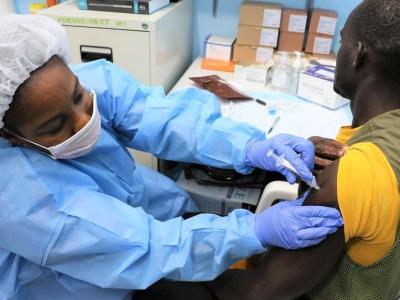Mar 15, 2005 (CIDRAP News) – The World Health Organization (WHO) said today it has found 130 suspected cases of plague, 57 of them fatal, in its ongoing investigation of an outbreak in the northeastern Congo.
In its previous update on Mar 9, the agency had reported 114 cases, including 54 deaths.
The WHO sent a team to Zobia in Oriental province in late February following reports that pneumonic plague had killed at least 61 people and might have sickened hundreds more. Poor sanitation in the Zobia diamond mine, which employs 7,000, was thought to have helped spread the disease.
The latest case numbers "are based on the current situation and a retrospective analysis of cases since 15 December 2004," the WHO said. The statement didn't specify that all the cases were pneumonic plague, but it said, "No cases of bubonic plague have been detected."
The WHO team has checked on 363 contacts of suspected case-patients. The team is continuing to trace contacts and analyze clinical specimens, and patients are being treated in isolation centers, the agency said.
The WHO originally was concerned that infected miners fleeing the area might spread the disease over a wide region. Later reports indicated that the cases were mostly confined to the war-torn Zobia area, but today's update said nothing about the geographic extent of the outbreak.
Pneumonic plague is the rarest form of plague, constituting only about 2% of cases, according to the WHO. The disease spreads via aerosolized bacteria and can be fatal as soon as 48 hours after symptoms appear, but it can be treated with antibiotics. Rodents are the natural reservoir for plague bacteria, which more typically spread to humans via flea bites or contact with infected animal carcasses.
See also:
Mar 15 WHO statement
http://www.who.int/csr/don/2005_03_15/en/
Mar 9 WHO statement
http://www.who.int/csr/don/2005_03_09/en/
Feb 18 CIDRAP News story, "Pneumonic plague outbreak in Congo sparks WHO response"
















